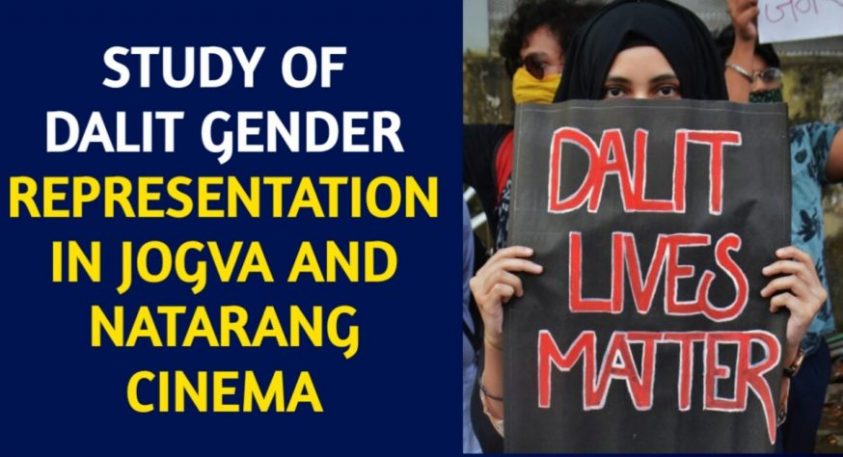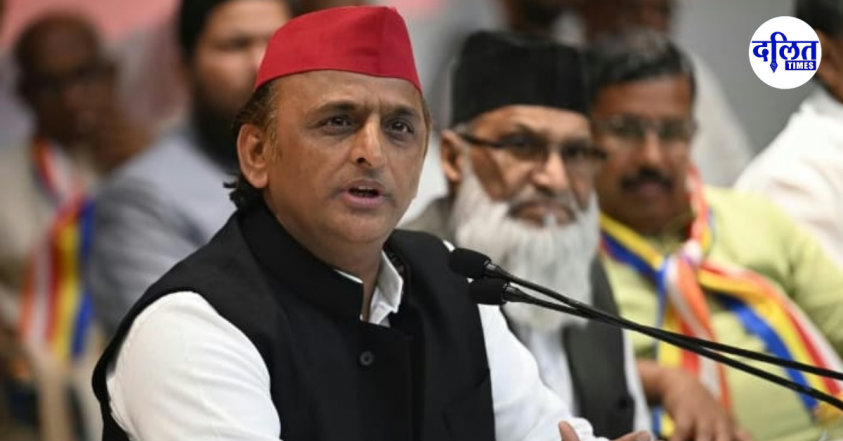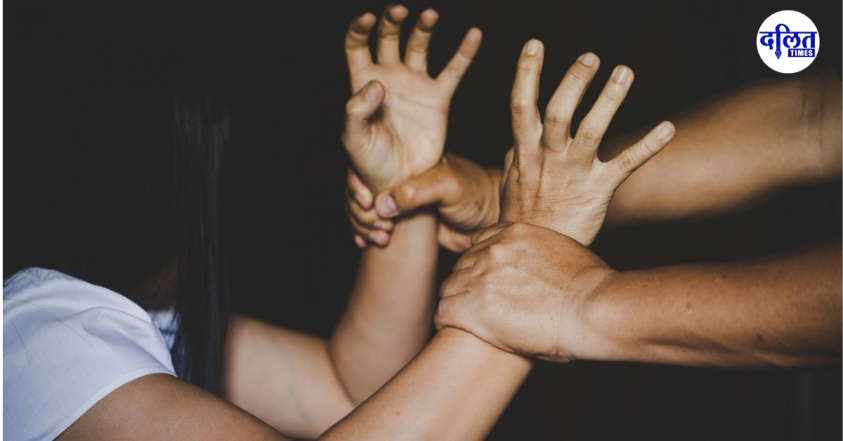In social science for Research purpose cinema is used as a text to study society. Cinema can be used as history for study the social history. In this research paper I am using Marathi cinema as a text for study the social hierarchies in society. I have selected JOGVA & NATARANG for my research paper. In both the films main characters are drawn from lower caste. Who is deprived caste of our society. In society, caste is based on hierarchy. Where upper caste is proud and powerful against lower caste is who are poor and weak. This reflects in daily practices of life. It includes social practices, cultural practices, ritual practices and traditions of our life. In both of these cinemas cultural practice related to sexual abuse. In Natarang, Tamasha which is popular folk form in Maharashtrian culture has been used. In Tamasha dancers are essentially from lower caste women and men, who entertain (mainly) upper caste men by performing dance. Jogva shows cultural practice in society. Jogva depict a person who has given some duties to do usually Jogata refers to a man and Jogatin refers to a woman. They are forced by society to give up everything and serve the god. Jogata has to give up his male character and act as a woman and for Jogatin marriage is not allowed. This tradition is still followed in some part of rural India in different forms. With the help of these movies, I will try to understand in this research paper how Dalit and gender representation would have demonstrated by social hierarchy.
RESEARCH PAPER:
In Indian society there are many hierarchies which are based on different aspects. I have studied two Marathi language films for this research paper. One is Natarang and another film is Jogva. Both films are of different contents but they greatly relate to Indian social hierarchies. In the film Natarang, the struggle of Nachya’s life has been depicted and, in the movie, Jogva, the struggle of the Jogata-Jogatin life has been depicted. The relations between the people are not only based on caste and class, etc. but are also influenced by gender relations. In my research paper I am using Gender and Dalit as categories of analysis of the social hierarchies in Indian society. This is the main concept to understand how the social hierarchies are being maintained in our society. For this research paper, I will start with the concept of Gender. Many scholars have already written on it. For this paper I am referring to Ann Oakley who was among the first few feminist scholars to use this concept says that, “Gender is a matter of culture, it refers to the social classification of men and women into masculine and feminine that people are male or female can usually be judged by referring to biological evidence. That they are masculine or feminine cannot be judged in the same ways: the criteria are cultural, differing with time and place. The constancy of sex must be admitted, but so also must the variability of gender.” She concludes that gender has no biological origin, that the connections between sex and gender are not really natural at all. Gender relations are gender – based relations between women and men, women and women, men and men. Because of patriarchal ideology and system, gender relations everywhere are unequal and hierarchical. Women are subordinated and discriminated against.
My second important concept for this paper is Dalit. Dalit is a socio-political concept, which has many dimensions to its understanding. Researcher Lovedeep Kumar observes that Dalits are the lower parts of our society. It appears that the major stratification in terms of caste was originally based on occupational division without a vertical social hierarchy. Shudras were considered clearly inferior to the other three castes and were constrained to perform only menial jobs. Those doing menial jobs obviously had low status. A person who had a low status in the caste hierarchy also had low status in other hierarchies of the society such as economic or political. Thus for centuries Dalits have been positioned at the bottom of the rigid Indian caste society. People from other castes, who considered themselves to be higher, believe that Dalits are impure by birth and that their touch or sheer presence could be polluting hence, they are assumed to be untouchable. For centuries, Dalits were excluded from the mainstream society and were only allowed to pursue menial occupations like cleaning dry latrines, sweeping, tanning or working as landless labour for meagre daily wages. Almost in whole of the ancient period, they were the people who cultivated the land, mended the shoes, washed the clothes, made the ropes, cleaned the streets and did all types of menial works. Dalits are not only engaged in menial work but are also involved in social and cultural practices which are considered inferior in social status and have social stigma.
Kamla Bhasin says that patriarchy is a social and ideological system which considers men to be superior to women, one in which men have more control over resources and decision making. Patriarchy is historically constructed and its form, content and extent can be different in different contexts, and at different times. Like all societal systems, patriarchy too has an ideology and structure which together ensure that men are heads of households, inheritors of family name and property. All social institutions moreover, are male dominated. Religions have played an important role in creating and perpetuating patriarchal ideology. They have spread notions of male superiority through stories like, Eve was created from Adam’s rib or man is created in the image of God, etc. Today, media and even educational institutions spread patriarchal ideology by showing men to be stronger in decision making positions and women as consumers, dependent and jealous. Ideology plays an important role in perpetuating social systems and controlling people’s minds. For example, by reducing women to bodies and objectifying them, media encourages violence against women. Ideology provides the justification for social behaviour and socio-economic structures. Normally Women’s productive or labour power, Women’s reproduction, Women’s sexuality, Women’s mobility, Property and other economic resources and Social cultural and political institutions are areas of women’s lives and societies can be said to be under patriarchal control.
I am beginning my writing on films with Jogva. Jogva is a Marathi film directed by Rajeev Patil. The film Jogva is based on two books by Dr.Rajan Gavas and one book by Charuta Sagar. Dr.Rajan Gavas’s books are Chaundak and Bhandarayog. Charuta Sagar’s book is Darshan. According to the Jogata tradition the film shows the struggles of Jogata–Jogatin .This film was released in 2009. Upendra Limaye and Mukta Burve have played the lead roles in this movie. Jogata tradition of Southera Maharashtra and Northera Karnataka is shown in this film. In the name of Jogata tradition the Jogata– Jogatin have to face many problems and a lot of harassment from the society. Due to poverty and superstitious mentality, parents turn their children into Jogata-Jogatin under the Jogata tradition. Jogva is asking for alms (begging) in the name of god and Jogva is the traditional right of Jogata -Jogatin. As per the oath taken before the Goddess, both must maintain themselves by begging only. They go from door to door and say, “Akkandi Jogva” meaning “continuous begging”.
In the film Suli and Tayappa are forced to become Jogata-Jogatin. As per the tradition of Jogata Suli should not marry any person in her life and Tayappa being a man, has to stay like a woman. They both meet in a fair of Jogata-Jogatin. They both struggle in their life as they have to face many problems. As Tayappa has to live the life of a Jogata, Suli didn’t recognise his love for her. Tayappa’s love for suli is shown as a proof of his masculinity in the film. Throughout the film he drapes a saree but inside he is a man. In her attempt to break away from this Jogata tradition Suli gets cheated. Afterwards Suli realises the love of Tayappa for her. They both fight against this tradition to get out of their rigid structure and for this Tayappa unties her much entangled Jat (bunch of hair which is stuck together). Jat is said to be a god gifted to the Jogatins to identify them. Tayappa and Suli succeed in getting out of this Jogata tradition. People belonging to the Jogata tradition usually are from poor families and are generally superstitious with reference to their gods. The film Jogva depicts the reality of the Jogatins
who are cheated and exploited by the male members of society. Both lead characters try to break away from this tradition and the restricted life it imposes on women. These women are easily available and accessible for exploitation by everyone/ every male in society. This is just a glimpse of the unjust, unequal gender relations prevailing in our Indian society. These women are Dalit who have the lowest caste status in the society. They are forced into these cultural activities, which are entertaining the male members of society. There are no upper caste women in this Jogatin tradition who sacrifice themselves for their god. This system provides an easy way upper caste and lower caste males for their sexual fulfilment. As we can observe in society all men and women relations are based on power. This structure provides power and status to men. Upper caste men have the power on both men and women of lower castes but also have power over their caste women The film Jogva shows the male character of Jogatas an existing way of providing sexual fulfilment for other male members of society. Another character in the film, Yamanya tells Tayappa that he cannot survive without men and drink in his life.
In the second film Natarang, the life of Nachya and his struggle is portrayed. The movie is based on Tamasha, a folk form of Maharashtra culture. Natarang is a Marathi film directed by Ravi Jadhav. This film is based on Anand Yadav’s novel „Natarang‟. In Natarang, a farm labourer decides to start a Tamasha troupe. Pandoba is their mentor. He tells other members in the troupe that without a lady dancer tamasha troupe will not succeed. After many difficulties and many problems they find a lady dancer (Naina) for their tamasha performance. But Naina put forth her condition for participation in the tamasha troupe a Nachya. As Nachya is the person who creates comedy on stage, Guna agrees to be a Nachya in the Tamasha .The family member of Guna was obviously not happy with him being a Nachya. The people of the village harass Guna’s family members for playing role of Nachya .They raise questions of Guna’s masculinity. Guna does not care about this issue. He is just happy with the income and success of his troupe. Naina and Guna fall in Love. But Naina does not agree to marry with Nachya. Being a Nachya’s wife she feels insecure in the society. This answer is shocking for Guna .This tamasha troupe is successful in their work. But this tamasha troupe ends with a terrible and horrible end because of the struggle between two political parties. Guna and the women in the troupe are raped by other political party members (men). In our society women are raped for settling scores with the opposite party, community or the enemy. Here Nachya is raped because he does not fit into the identity of a man. He acts like a woman in the tamasha troupe. Nachya is a comic character in performance and in the troupe. It is expected that he should listen to everyone and entertain people. But in the film Guna tries to achieve success without caring for political relations and struggles. Guna behaves like Nachya‟ only in the performance. But otherwise he exerts his identity as a man and refuses to lives like a woman and entertain male members of society.
In both films Natarang and Jogva the contents different but throw a light on the Indian Social hierarchies. They describe the hierarchies based on Gender, Dalit and Patriarchy. In both, films Tayappa and Guna dress like women. This does not show their masculinity. In the patriarchal structure there are fixed rules and regulations about how women and men should dress up. But the Indian context our social hierarchies have stated which men have the right to show their masculinity in society. With these hierarchies upper caste men always have power on lower caste men and women. This hierarchy is a part of patriarchy, where men have different power relations with each other. Both customs are shining examples of social injustice and exploitation of Dalits. In society patriarchy has accepted only two possibilities of gender, men and women. Other /third gender is not accepted as a part of society. Tayappa and Nachya represent men in the third gender who are actually men but do take up the life of being a female or exhibiting feminine traits. And they are easily accessible to upper caste men in society. This shows the power relations between different strata of society.
Conclusion:
Society looks upon the tradition of Jogva as something reserved exclusively for illiterate and backward people belonging to the lower strata of society. This tradition is not looked down upon by others in society. In Natarang the Tamasha is folk form of Maharashtrian culture. It is accepted by society as a part of culture which entertains. If we observe the traditions shown in both the films, they are related to lower caste customs. In patriarchy men and women relations are not equal and are essentially power relations in society the caste decides who are in what position. Dalits are not only engaged with menial work but also work which is considered as a jobs with low value and status. Dalits are engaged in cultural practices, which have a lower status and also carry a stigma. As mentioned by many scholars, Dalit is not relating to only Buddhists and Mahars but also who are politically, socially and culturally backward. Both practices are different from each other but the main content of practices is that Dalits suffered from social injustices and were still are exploited. As Dalits are on the lowest rung of the social ladder they were denied entry into several occupations which were relatively cleaner. They were associated with a variety of specialized traditional occupations such as scavenging, cobbling and disposal of carcasses etc.
During one of the performance, Guna tries to play the role of Arjun. But the audience does not approve of Guna in the role of Arjun. They expect him to play „Nachya‟ only. And to show their disapproval they stone the artists on stage. So Guna’s dream of performing other roles in his career is shattered. In Natarang as mentioned earlier, Guna is raped because he is performing Nachya’s character in the Tamasha. Guna does not accept the identity of being a “women‟ when he is not performing on stage. But the society looks upon him only as “Nachya‟. So when he tries to fight back a group of men and exert him identity as a man, it is not tolerated by other men. So in order to teach him a lesson, he is raped. In Jogva, Tayappa did not like this Jogata tradition. At every step of his life he fought against being a Jogata. Men in society tried to sex with Tayappa. At this point Tayappa is shown to expresses with all his might that, “he is a man‟.
In both films Tayappa as Jogata and Guna as Nachya are victims social injustices and sexual exploitations because they have social status as Dalits and have third gender identity. Both identities have social stigma in society. For centuries Dalits have been positioned at the bottom of the rigid Indian caste system. People from other castes, who consider themselves to be higher, believe that Dalits are impure by birth and that their touch or sheer presence could be polluting hence, they are assumed to be untouchable. Gender is a matter of culture. It refers to the social classification of men and women into masculine‟ and feminine‟. People are identified as males and females and can usually be judged by referring to the biological evidence. But being a third gender is not easily accepted by our rigid society. Both Nachya and Tayappa are suffer because they challenge the norms and regulations are prescribed by society which are gender norms, patriarchal structures and being Dalit in society.
Bhagyashree Balasaheb Jawale
KSP Women’s Studies Centre
Savitribai Phule Pune University
Research Assistant
Email id – [email protected]
Reference:
1)Bhasin Kamla. 2005.Understanding Gender.Women Unlimited
2) Bhasin Kamla. 2005.Exploring Masculinity.Women Unlimited
3)Patil Rajeev. 2010.Natarang(Marathi Language Film)
4)Jadhav Ravi. 2009.Jogava(Marathi Language Film)
5)Kumar Lovedeep. 2014.Political participation of Dalits in Punjab;a
comparative study of Nawanshehar and Patiala district. Punjab University
(Phd thesis)



